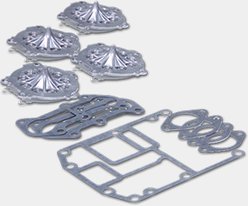This blog is by renowned saltwater angler George Poveromo, a Mercury Pro Team member and host of “George Poveromo’s World of Saltwater Angling” TV series. George is also the producer and host of the popular “Salt Water Sportsman National Seminar Series,” the nation’s longest-running and most successful educational course on recreational marine fishing techniques.
A solid working knowledge of navigational markers and aids is essential for safely traversing our waterways. There are numerous such aids and markers, and every boater must take time to thoroughly understand each one.
Below is the lowdown on our most essential markers for navigating the Intracoastal Waterway (ICW) based on the guidelines for the U.S. Coast Guard U.S. Aids to Navigation System. The navigational aids on the ICW are the same as on other federal waters, with a couple of ICW-specific additions.
Buoys and Beacons
Buoys and beacons comprise the two main types of navigation aids, both on the water and on nav charts.
Buoys are aids that float and are moored to the bottom. A buoy with a cylindrical shape and conical top is called a nun buoy. These are red with even numbers. A buoy with a cylindrical shape and a flat top is called a can buoy. These are green and sport odd numbers. There are also lighted buoys, and buoys with striped colors designating preferred channels (details below).
Can and nun buoys mark the edges of navigable channels. When entering from the ocean or running upstream, red nun buoys should be kept to the boat's starboard side, and green can buoys should be kept to the port side. This reverses when heading out a channel into the open ocean. To help you remember, think of the phrase “red, right returning.” Keep the red nun buoys on the right when returning from the ocean, and vice versa.
Beacons are permanently fixed aids. Lighted beacons are called “lights,” whereas those without a light are designated as day beacons. Lighted beacons also serve as aids for nighttime navigation.
Following Navigational Aids
Both buoys and beacons generally mark well-defined navigable channels, like the ICW, and provide a variety of navigational information through shape, color, light and/or audible signals.
Green aids, including square day boards, are assigned odd numbers. Red aids, including triangle day boards, sport even numbers.
When entering a channel from the open sea or proceeding upstream, the red aids should be kept to the vessel's right or starboard side. The even numbers on these aids should increase as you proceed inland. Conversely, when proceeding to open water, or seaward, the green aids should be on the vessel's starboard side. They’ll be designated by odd numbers on the aids, which decrease as you progress seaward.
On the ICW, which follows the coastline from New Jersey to Texas, “red, right, returning” holds true when heading south. Therefore, red triangle markers should be kept to starboard side and green square markers kept to your port side when “returning” in a southerly fashion within the ICW. Even in situations where the ICW turns north, if you’re navigating toward Texas, keep the red triangle markers on the starboard side.
The respective markers should also have yellow symbols to help with these designations. That is, yellow triangles reinforce the markers to be kept to starboard, and yellow squares reinforce the markers to be kept to port.
Preferred-Channel Aids
Beacons and buoys with horizontal bands of both red and green mark the junction of navigational channels. The top color indicates the direction of the preferred, primary channel. When returning (again, when entering a channel from the open sea or proceeding upstream), if you encounter a junction, keeping the aids with red as the top color on your boat’s starboard side will place you in the preferred channel. Keeping those aids to port will place you in the secondary channel.
Conversely, when heading seaward to open water, keeping the aids with green as the top color on the vessel's starboard side will place you in the preferred channel, while keeping those aids on the port side will place you in the secondary channel.
Again, these are just the very basics when it comes to navigational markers and aids when traversing the ICW. I encourage everyone to take a safe boating course. It will keep not only you, your family and friends safe on the water, but also others who share the same passion for our waterways.
You can view a guide to the U.S. Coast Guard U.S. Aids to Navigation System here.



























